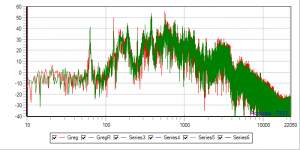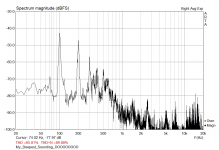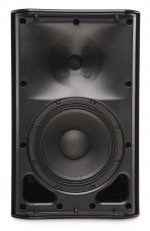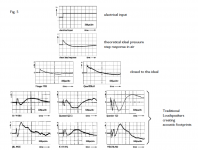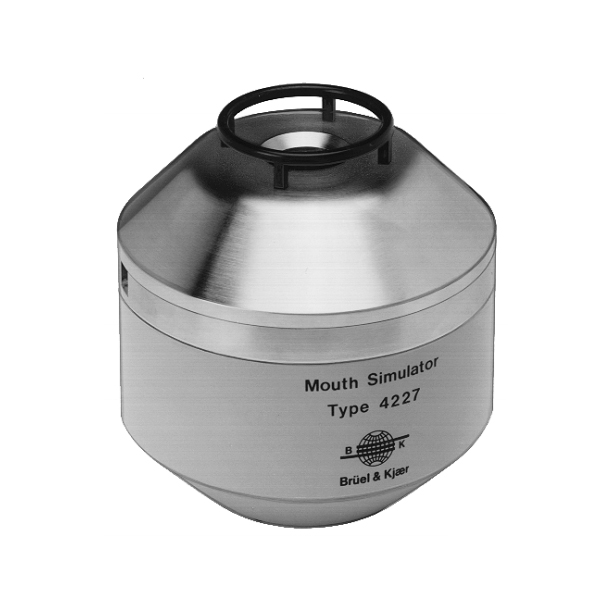Interesting comparison of LS3/5a vs Harbeth here: Compared! Harbeth. Falcon Acoustics. Sound Artist. LS3/5a - YouTube
One of the most surprising speakers for spoken voice I've ever heard is the little QSC K8 or K8.2
It has fooled me several times into thinking someone was talking to me. That's not a trick many speakers can do. The QSC design could serve as inspiration. It's just an 8" with a horn and a rather good crossover.
It has fooled me several times into thinking someone was talking to me. That's not a trick many speakers can do. The QSC design could serve as inspiration. It's just an 8" with a horn and a rather good crossover.
I was going by what I read on Wikipedia: Baritone singers go down to A2 (110 Hz), and Bass singers go down to E2 (82.4 Hz). Am I confused? or missing something?
Yes you are. And - Yes you do.
You e.g. have missed a nice recording of the "Hymnus Prereginorum / Dum Pater Familias". You will have to go down to exactly 62.769Hz. Schröder included. See the nice, coloured Acourate spectrogram of this a capella soundtrack. And the 100Hz on the Arta spectrogram? It's my own, deepest possible "OOOOO". I am no singer. Only just for O's test tones.
So I would say, for human voice, conceptually go down to <60Hz to be on the safe side. At least if you don't intend to uniquely listen to Barbara Bonney.
Attachments
Last edited:
QSC K8
Attachments
Last edited by a moderator:
The "rather good crossover" uses both IIR and FIR filters, flattening both frequency and phase response through the crossover region, as well as most of the vocal range. The horizontal coverage angle of the woofer and the tweeter also match at their cross-over frequency- matching, and uniform polar response is another step closer to "perfect reproduction of the human voice".One of the most surprising speakers for spoken voice I've ever heard is the little QSC K8 or K8.2
It has fooled me several times into thinking someone was talking to me. That's not a trick many speakers can do. The QSC design could serve as inspiration. It's just an 8" with a horn and a rather good crossover.
Going a step further, co-axial or MEH (multiple entry horn) designs can virtually duplicate the (near) single point source of a human voice, reducing or eliminating the polar response deviations inherent in multi-way multiple point source designs like the K8 and others discussed previously.
I have a set of Manger 109s that sound amazing with vocals. Take a look at how much of a kicking Troelsgraven gave those stating they have excessive midrange distortion. Why do they sound so great overall in the mids?
Also, the QSC K8 is quite the capable little speaker. If not pushed too hard, they sound really good playing acoustical material. I believe they use Celestion brand drivers.
A little fullrange isn't going to give a lifelike rendition of a well bodied male vocal at actual real life listening level. It wont have the acoustical output capability. There's more low end there than you think. A really good 2 way with a 7-8 inch midwoofer and a capable large dome tweeter is really what you need to do the job. I'm sure there are some exotic larger fullrange drivers out there too, but I'm not familiar with any.
Also, the QSC K8 is quite the capable little speaker. If not pushed too hard, they sound really good playing acoustical material. I believe they use Celestion brand drivers.
A little fullrange isn't going to give a lifelike rendition of a well bodied male vocal at actual real life listening level. It wont have the acoustical output capability. There's more low end there than you think. A really good 2 way with a 7-8 inch midwoofer and a capable large dome tweeter is really what you need to do the job. I'm sure there are some exotic larger fullrange drivers out there too, but I'm not familiar with any.
The Manger upper transducer device has nearly ideal step response, and near flat phase response over most of the vocal range to beyond 20kHz.I have a set of Manger 109s that sound amazing with vocals. Why do they sound so great overall in the mids?
Also, the QSC K8 is quite the capable little speaker.
Using FIR filters (like the QSC K8) traditional loudspeaker technology can now approach similar response.
Attachments
our brain likes to hear harmonics not sine waves which are boring and carry no information .. and harmonic distortion is part of a natural event called MUSIC
step response is useless our hearing worx different
look at waveforms of natural instruments
our hearing use the leading edge for starting of extracting informations from the following decay
for many years manger declared the delayed step response curves as being NOISES
to support the selling of his technically obscure product ... later he dropped the idea in the ads
maybe the specialities of the manger disc makes not-so-good recordings more listenable - who knows?
for judgement of an audio product you need uncompressed recordings of a single instrument or singer taken outdoors with suppressed floor reflection .. hard to find so please make your own!
playback should be done also outdoors in order to avoid the plague of zillion reflections coming from the room/ furniture surfaces ...
for recording you can use a good measuring mic (omni-char.) with 120dB dynamic range and -80dB noise floor for around 300 euro
you have also the option to use a good headphone in your home later on and switch between two recorded results to detect if there are differences at all and how large they are
headphones are much more revealing than speakers!
good luck
ps: I should mention using a digital equalizer can make any frequency response totally FLAT so judging comparisons makes more sense ... SOUNDEASY is an excellent software solution you only need a laptop computer for measurement/equalization ...
step response is useless our hearing worx different
look at waveforms of natural instruments
our hearing use the leading edge for starting of extracting informations from the following decay
for many years manger declared the delayed step response curves as being NOISES
to support the selling of his technically obscure product ... later he dropped the idea in the ads
maybe the specialities of the manger disc makes not-so-good recordings more listenable - who knows?
for judgement of an audio product you need uncompressed recordings of a single instrument or singer taken outdoors with suppressed floor reflection .. hard to find so please make your own!
playback should be done also outdoors in order to avoid the plague of zillion reflections coming from the room/ furniture surfaces ...
for recording you can use a good measuring mic (omni-char.) with 120dB dynamic range and -80dB noise floor for around 300 euro
you have also the option to use a good headphone in your home later on and switch between two recorded results to detect if there are differences at all and how large they are
headphones are much more revealing than speakers!
good luck
ps: I should mention using a digital equalizer can make any frequency response totally FLAT so judging comparisons makes more sense ... SOUNDEASY is an excellent software solution you only need a laptop computer for measurement/equalization ...
Last edited:
Some oktavists can go down lower than 55 Hz (A1, three ledger lines below the bass staff).I believe that all the qualities that make a speaker excellent overall are the same qualities that make a speaker an excellent for human voice. If you are talking about a speaker that is used only for human voice (singing), then you do not need deep bass capability. Baritone singers can reach down to about 100 Hz fundamental, and bass singers can reach down to about 80 hz fundamental.
I use both the Satori MW16TX-4 and the SB 17CAC35 and both do an excellent job with human voice.
The deepest pitch I have sung in a choral setting is 58 Hz (Bb1, two ledger lines below the bass staff).
Last edited:
Yes there is some slick DSP going on. You can kinda hear it, but mostly is not annoying. They've done a good job.The "rather good crossover" uses both IIR and FIR filters,
Indeed. Having heard Tom Danley give a lecture on a pair of SH50, I can attest to that. However it was a little bigger, richer and more powerful than Doc Danley's "unplugged" voice.Going a step further, co-axial or MEH (multiple entry horn) designs can virtually duplicate the (near) single point source of a human voice,
I assume the 1khz(Roughly) bump as being what brings out the vocal presence on the LS3/5a. They all seem to have it in varying amounts.
Yes.
Friends, I found a driver that looks suspiciously like the legendary Radial from Harbeth. This is aurum cantus ac-180f1. Judging by the description, this guy should be similar in properties. Has anyone tried this driver?
Aurum Cantus AC-180F1 7" Woofer
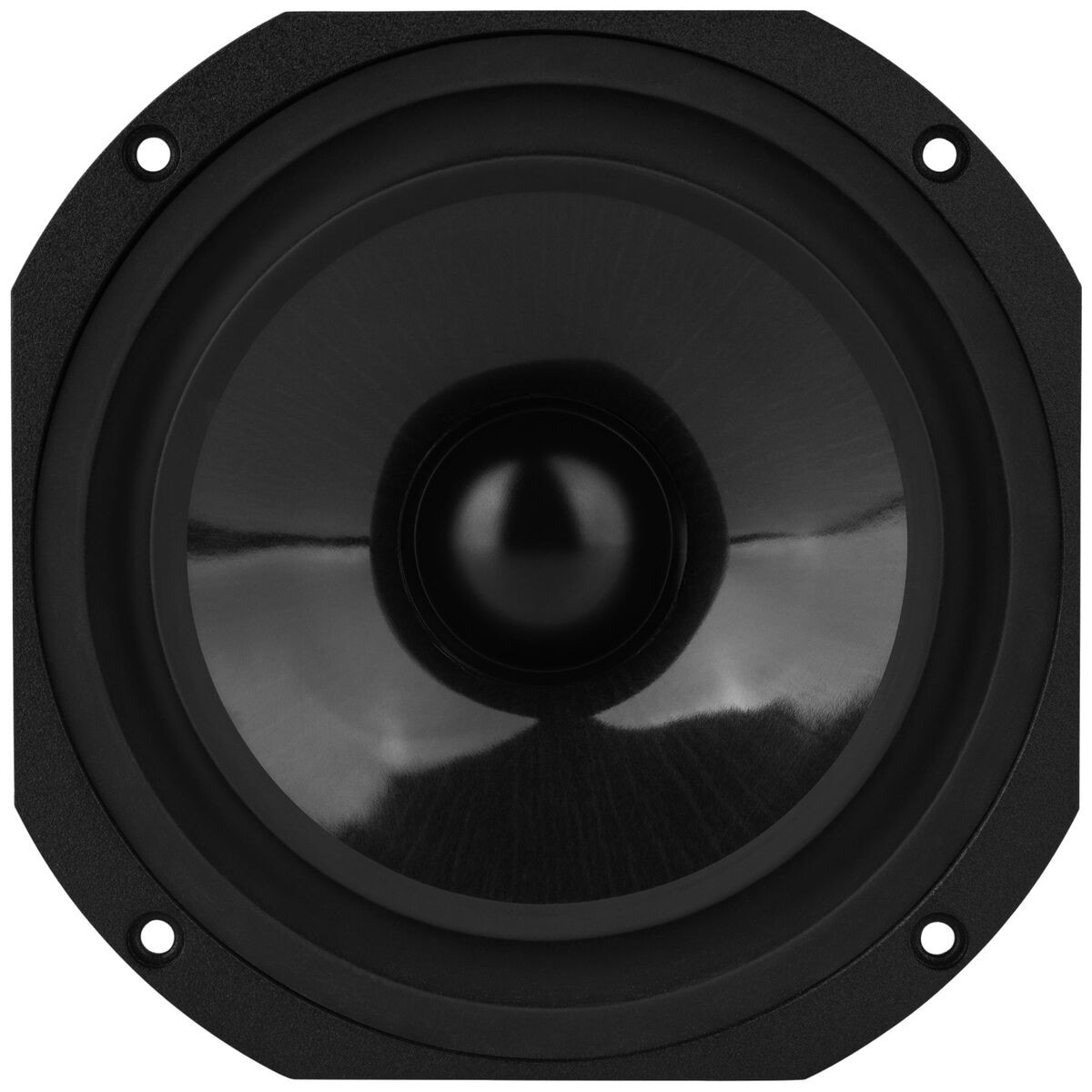
Aurum Cantus AC-180F1 7" Woofer

Last edited:
It surely isn't the Harbeth driver, as they are made inhouse with a patented polycone structure. And Allan Shaw does not want to sell the patent or the formula to do it. So it may look similar, but it isn't surely the same.
The question is if that matters, I think the main thing about the speakers is the very resonance free (in the passband) and laidback nature of the drivers, and a tweeter that is detailed but not shrill. Harbeth does that very good, but other speakers can do that also i think. I still love my old Goodman Mezzo SL's for that (they are the only non-diy speakers i still have). Those are not hifi in modern terms, but they do sound very good to the ears.
The question is if that matters, I think the main thing about the speakers is the very resonance free (in the passband) and laidback nature of the drivers, and a tweeter that is detailed but not shrill. Harbeth does that very good, but other speakers can do that also i think. I still love my old Goodman Mezzo SL's for that (they are the only non-diy speakers i still have). Those are not hifi in modern terms, but they do sound very good to the ears.
@ wax²... maybe, maybe not. Many thinks they are so much close looking to Volt drivers that they in fact are !
One marketing fact and that's also a reason why many brands stopped to use on the shelves speakers from drivers manufacterers, is they comunicate a lot on their so sota savoir faire ! ... which may ot not be translated in a unique sounding characteristic of the brand : e.g. Spendor and their midrange, Dynaudio for their unique tweeters, Focal for their sandwich materials, etc, etc...
Is it not simply an oem with T&S characteristics for Harbeth ???? With all the polycone made in the world I don't see how Harbeth and few students had found wht all the others brands are making as well : Audiotechnology, Peereless, ScanSpeak, Seas... drivers are they core business !
One marketing fact and that's also a reason why many brands stopped to use on the shelves speakers from drivers manufacterers, is they comunicate a lot on their so sota savoir faire ! ... which may ot not be translated in a unique sounding characteristic of the brand : e.g. Spendor and their midrange, Dynaudio for their unique tweeters, Focal for their sandwich materials, etc, etc...
Is it not simply an oem with T&S characteristics for Harbeth ???? With all the polycone made in the world I don't see how Harbeth and few students had found wht all the others brands are making as well : Audiotechnology, Peereless, ScanSpeak, Seas... drivers are they core business !
- Status
- This old topic is closed. If you want to reopen this topic, contact a moderator using the "Report Post" button.
- Home
- Loudspeakers
- Multi-Way
- Loudspeaker for perfect reproduction of the human voice
